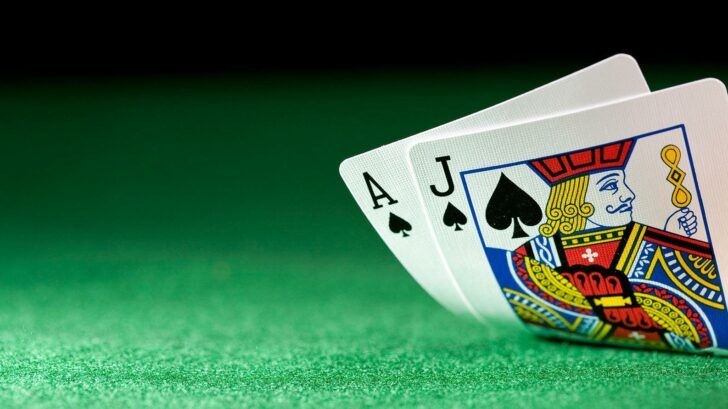Why Shuffle Tracking is Endorsed by Arnold Snyder and Proven to Help Your Blackjack Game

Blackjack is not a game of chance, and players who know what they’re doing can take home a nice cash prize. Blackjack strategy can help your gameplay, card counting even more so, but if you employ shuffle tracking, then you can really tip the odds in your favor.
Shuffle tracking may be miles harder than card counting, and it appears almost impossible to master on first impression, but thanks Arnold Snyder, who firmly holds a seat in the Blackjack Hall of Fame, shuffle tracking has become more accessible.
So what is shuffle tracking and how can it help your blackjack game?
Shuffle tracking: the basic principles
Becoming a top blackjack player means having one over the house in terms of the advantage. If you can reduce the house edge via card counting or shuffle tracking then you’ll certainly earn a nice profit to take home from the casino.
Card counting strategies are often the classic ways blackjack players up their game, but when coupled with shuffle tracking it can be a very powerful technique.
Top Blackjack Hall of Fame players:
• Edward O. Thorp is famed for being the father of the wearable computer and being one of the pioneers of card counting
• Peter Griffin is one of the original members from the Blackjack Hall of Fame and authored the Theory of Blackjack
• Ken Uston came up with the concept of team play at blackjack and gained notoriety for his card counting teams in casinos all over the world in the mid-1970s
When you have a shoe containing multiple decks of cards, a shuffle track allows the player to modify the cards in bunches by observing the shuffle and he or she can then make a corresponding bet based on the new cards that emerge from the shoe.
While card counting requires simple math skills and a running count with minimal memory strain, shuffle tracking is much harder, because you’re not only monitoring the cards, but you need to keep a keen eye and hone some estimation skills.
However, if you can master shuffle tracking like Arnold Snyder, then you’ll gain a huge advantage that could even allow you to bet against a card counter.
Snyder’s book “The Shuffle Tracker’s Cookbook” was the first on the subject, offering players an analysis on how the shuffle tracker can play to his or her advantage.
There are sophisticated skills and expertise that are necessary to shuffle track, since the player needs to identify the patterns in the cards.
Types of shuffle tracking
The basic principle of shuffle tracking is to monitor certain cards during the dealer’s shuffle, to give the player the advantage of knowing when certain cards will be dealt.
While six or eight deck shoes usually spell bad news for card counters, for shuffle trackers they are advantageous.
Since it takes seven shuffles of a deck to make the cards purely random, a six or eight deck shoe is more complex to mix up, so the shuffles are simple.
Like with card counting, there are different types of shuffle tracking techniques that are employed by advantage players.
The first type of tracking is more of an additional supplement to card counting. In this case, players monitor the “slugs” or sections of high and low cards.
If they are able to retain high and eliminate the low cards in the deck, then they are more likely to have an accurate count.
Ace sequencing is another popular method, where the aces are located in the deck. This technique increases the player’s chances by over 50%.
This method employs the technique where the player must break down a single deck. The card number doesn’t matter, it’s the numbers that count, and the card shuffle tracker checks out the cards, which will represent the 52nd card.
If the player can see an ace coming, after noting the marker cards close to the ace, then he or she can place a large bet.
However, since ace sequencing is one of the more popular methods of shuffle tracking, dealers have become more cautious and avoid showing their bottom cards when dividing the deck, when they can.
Ten steering is not dissimilar to ace sequencing, the only difference is the player keeps track of the cards that have the value of ten.
The tens are steered to the dealer by picking up additional cards or even from abstaining from selecting another card.
This tactic increases the dealer’s chances of getting busted. Normally, the dealer has a chance of 30% bust, but tracking the tens increases the likelihood of the player predicting that case.
The rewards of shuffle tracking?
While shuffle tracking not only requires a photographic memory and superhuman observation skills that are far more complex than in card counting, when used properly, trackers get to take home a nice pay packet at the end of the day.
Practice is the key to becoming a skilled shuffle tracker, but is it worth it?
Statistics have showed that shuffle tracking is more effective than card counting, and with Arnold Snyder’s book and the fact most casinos fear and cannot control shuffle tracking, it makes it appear like a good option.
However, there are some pitfalls, like casinos that use a shuffle machine or playing blackjack online make shuffle tracking useless.
But if you can become the master, you too could become a blackjack champ!




